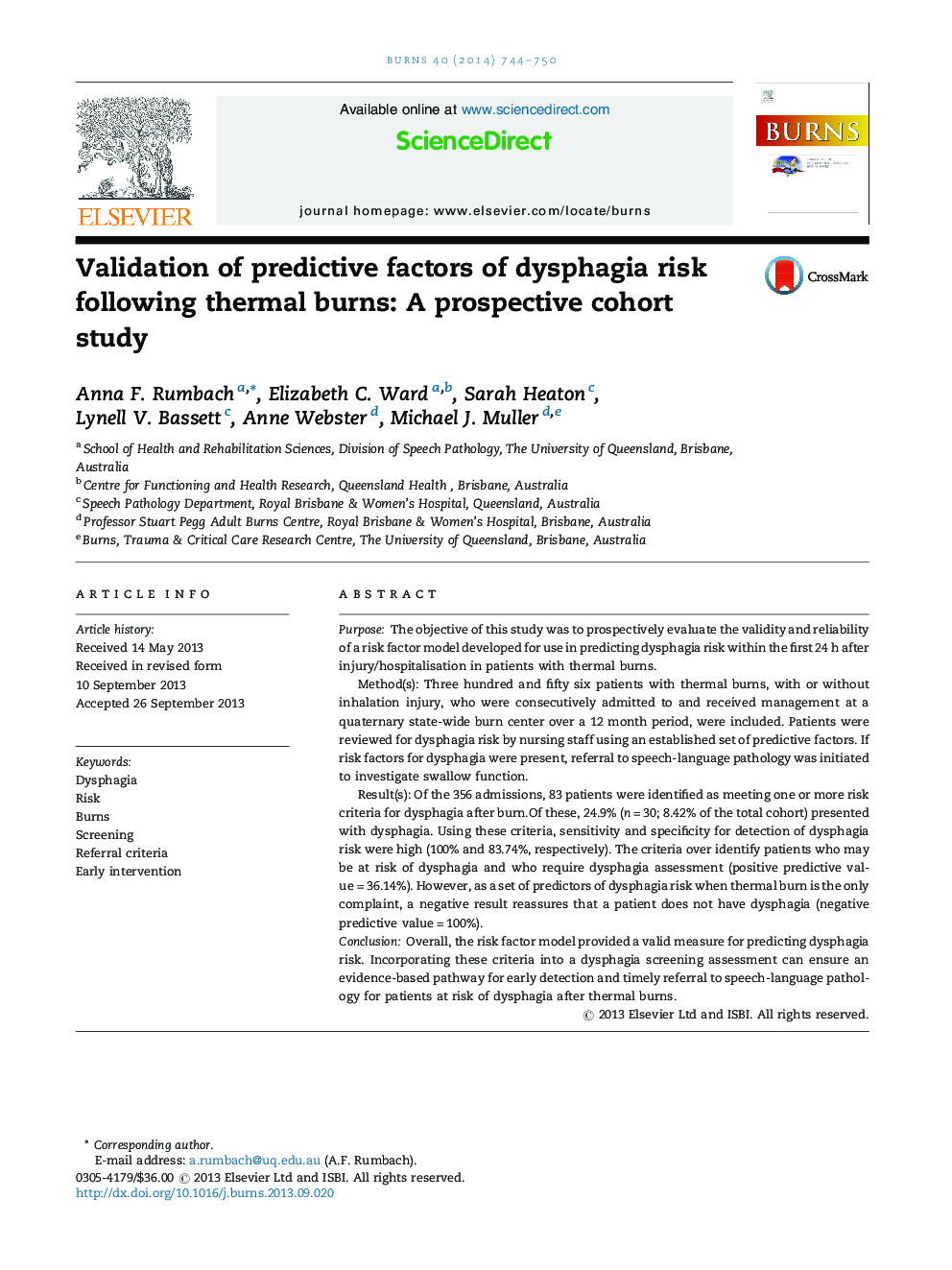| Article ID | Journal | Published Year | Pages | File Type |
|---|---|---|---|---|
| 3104504 | Burns | 2014 | 7 Pages |
PurposeThe objective of this study was to prospectively evaluate the validity and reliability of a risk factor model developed for use in predicting dysphagia risk within the first 24 h after injury/hospitalisation in patients with thermal burns.Method(s): Three hundred and fifty six patients with thermal burns, with or without inhalation injury, who were consecutively admitted to and received management at a quaternary state-wide burn center over a 12 month period, were included. Patients were reviewed for dysphagia risk by nursing staff using an established set of predictive factors. If risk factors for dysphagia were present, referral to speech-language pathology was initiated to investigate swallow function.Result(s): Of the 356 admissions, 83 patients were identified as meeting one or more risk criteria for dysphagia after burn.Of these, 24.9% (n = 30; 8.42% of the total cohort) presented with dysphagia. Using these criteria, sensitivity and specificity for detection of dysphagia risk were high (100% and 83.74%, respectively). The criteria over identify patients who may be at risk of dysphagia and who require dysphagia assessment (positive predictive value = 36.14%). However, as a set of predictors of dysphagia risk when thermal burn is the only complaint, a negative result reassures that a patient does not have dysphagia (negative predictive value = 100%).ConclusionOverall, the risk factor model provided a valid measure for predicting dysphagia risk. Incorporating these criteria into a dysphagia screening assessment can ensure an evidence-based pathway for early detection and timely referral to speech-language pathology for patients at risk of dysphagia after thermal burns.
